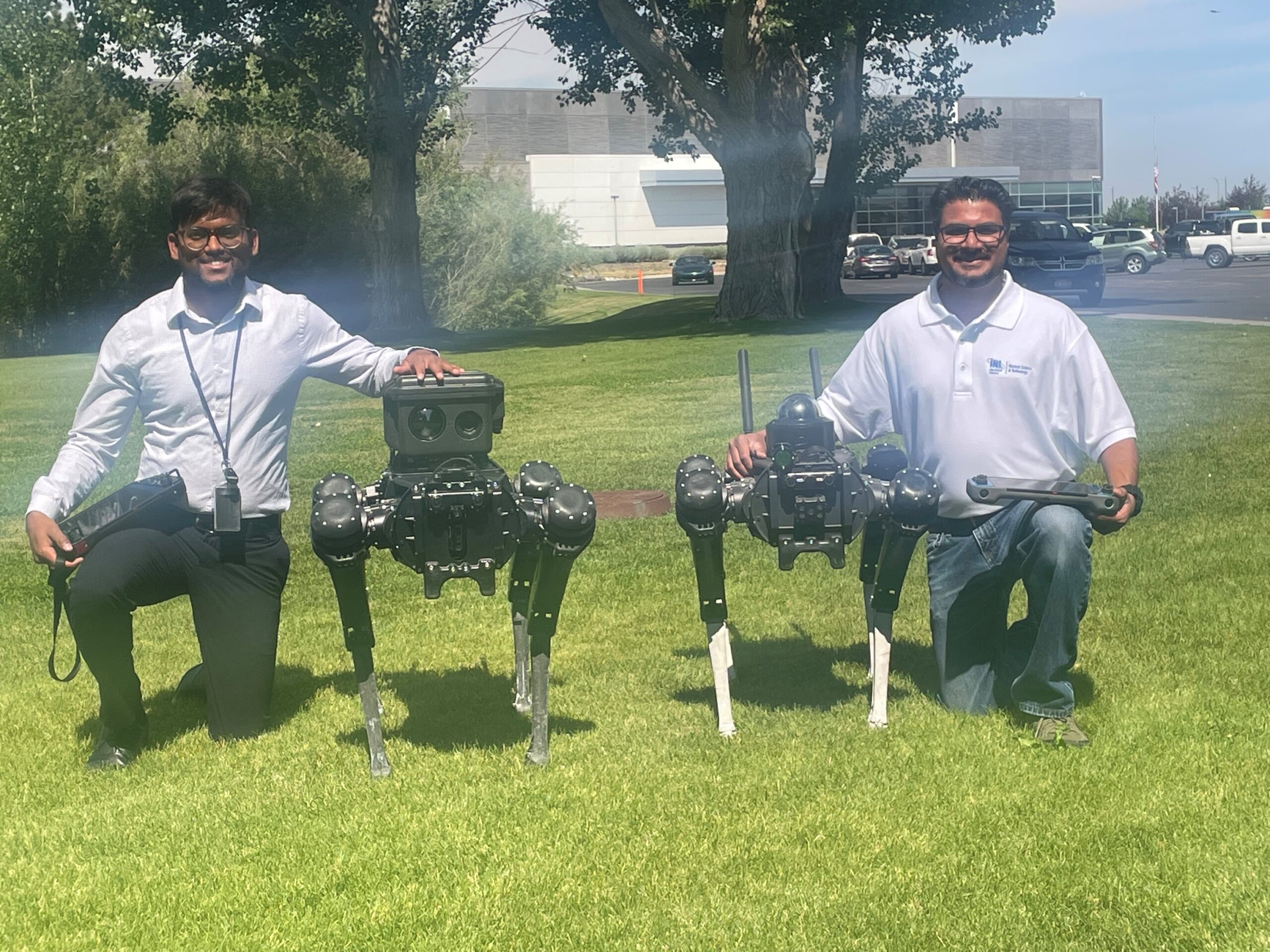Physical security at nuclear power plants has traditionally been heavily labor-intensive, requiring multiple shifts of staff per day. A team of researchers from Idaho National Laboratory (INL) and Idaho State University (ISU) is examining the feasibility of using robots to enhance and modernize security operations at these plants.
The project, one of 13 to receive CAES Collaboration Funds this year, aims to develop a research roadmap
on the use of robots for security purposes at nuclear power plants. The project is led by Vaibhav Yadav, an instrument controls and data science researcher with INL's Nuclear Science & Technology Directorate, and ISU's Mustafa Mashal, a CAES Fellow and associate professor in the Department of Civil and Environmental Engineering, with assistance from Uma Shankar Medasetti, a PhD student at ISU.
The team plans to publish a paper on the topic, exploring issues such as the technical feasibility of using robots to conduct security operations — how do they perform in adverse weather conditions, for example, and what are the limitations associated with performance characteristics such as battery life. An important question being considered is: How can a currently operating plant or a future reactor site demonstrate that it meets the performance and regulatory requirements of physical security in using a fleet of four-legged robots? The first step of the team's research is to gain an understanding of the technology utilized by robot manufacturers and how that technology impacts performance. To accomplish this, they are conducting comparative analysis of the different robot offerings and have engaged with several robot vendors as part of this effort.
We're wrapping up our review soon and will get a preliminary paper out,
Yadav said, adding that the goal is to create a research roadmap
that will pave the way for future research in use of dog robots for security applications such as intrusion detection, patrolling, inspection and communication, as well as other nuclear applications including industrial inspection, maintenance and radiation measurements.
Eventually, the research team plans to utilize ISU's Disaster Response Complex for conducting experiments in assessment of performance effectiveness of the robots. The outdoor DRC site spans approximately three acres on ISU's business park in Pocatello. It accommodates research, curriculum development and training/exercises for emergency responders from across the region. CAES provided seed funding for the DRC project, which involves INL and dates to 2018, when its director, Mashal, met INL researcher Bryon Marsh at the CAES Security Collaborative Research Planning Meeting. Later that year, the project received CAES Collaboration Funds. In 2019, Idaho's Higher Education Research Council awarded the project nearly $1.1 million through the Idaho Global Entrepreneurial Mission initiative.
CAES Collaboration Funds are awarded to projects led by INL researchers in partnership with faculty members/researchers from the CAES universities. The goal is to establish and foster relationships between the CAES entities in research, education and innovation. Details can be found here.

Idaho State University PhD student Uma Shankar Medasetti (left) and Idaho National Laboratory researcher Vaibhav Yadav pose with robots during a recent demonstration by a robot vendor at INL. Yadav and Medasetti are working on a CAES-funded project studying the ways in which robots can help optimize and modernize physical security operations at nuclear power plants.

